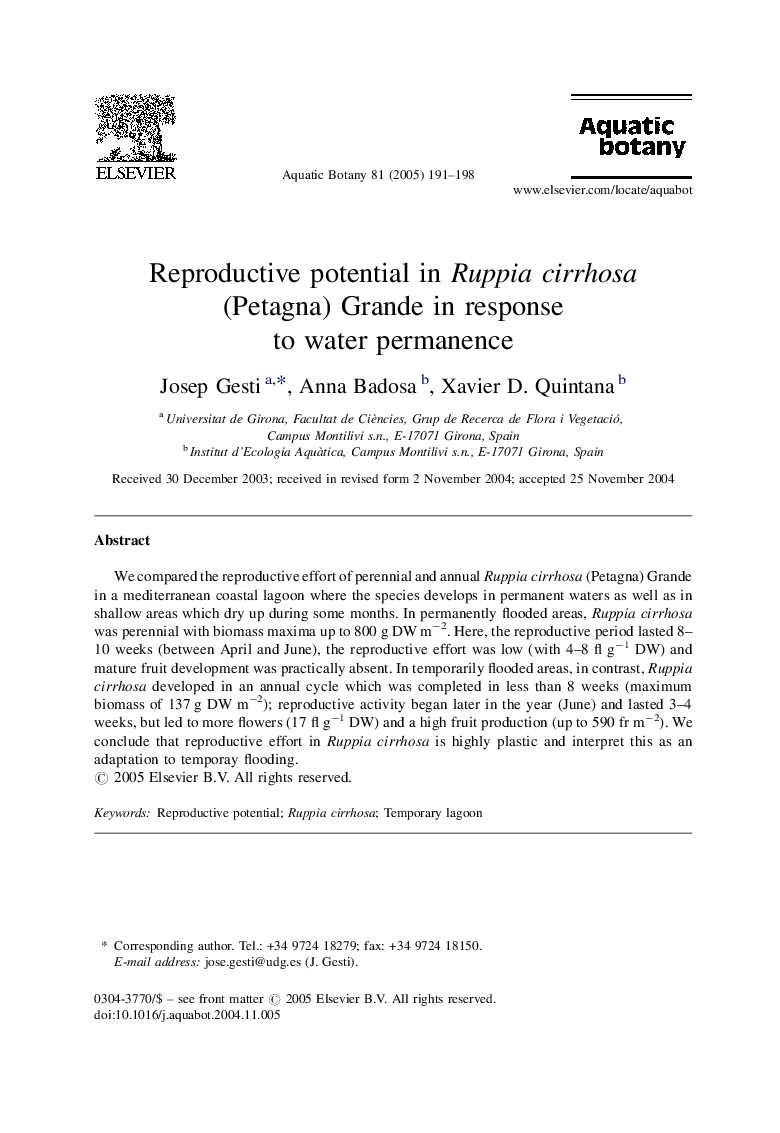| Article ID | Journal | Published Year | Pages | File Type |
|---|---|---|---|---|
| 9477627 | Aquatic Botany | 2005 | 8 Pages |
Abstract
We compared the reproductive effort of perennial and annual Ruppia cirrhosa (Petagna) Grande in a mediterranean coastal lagoon where the species develops in permanent waters as well as in shallow areas which dry up during some months. In permanently flooded areas, Ruppia cirrhosa was perennial with biomass maxima up to 800Â g DW mâ2. Here, the reproductive period lasted 8-10 weeks (between April and June), the reproductive effort was low (with 4-8 fl gâ1 DW) and mature fruit development was practically absent. In temporarily flooded areas, in contrast, Ruppia cirrhosa developed in an annual cycle which was completed in less than 8 weeks (maximum biomass of 137Â g DW mâ2); reproductive activity began later in the year (June) and lasted 3-4 weeks, but led to more flowers (17 fl gâ1 DW) and a high fruit production (up to 590 fr mâ2). We conclude that reproductive effort in Ruppia cirrhosa is highly plastic and interpret this as an adaptation to temporay flooding.
Related Topics
Life Sciences
Agricultural and Biological Sciences
Aquatic Science
Authors
Josep Gesti, Anna Badosa, Xavier D. Quintana,
